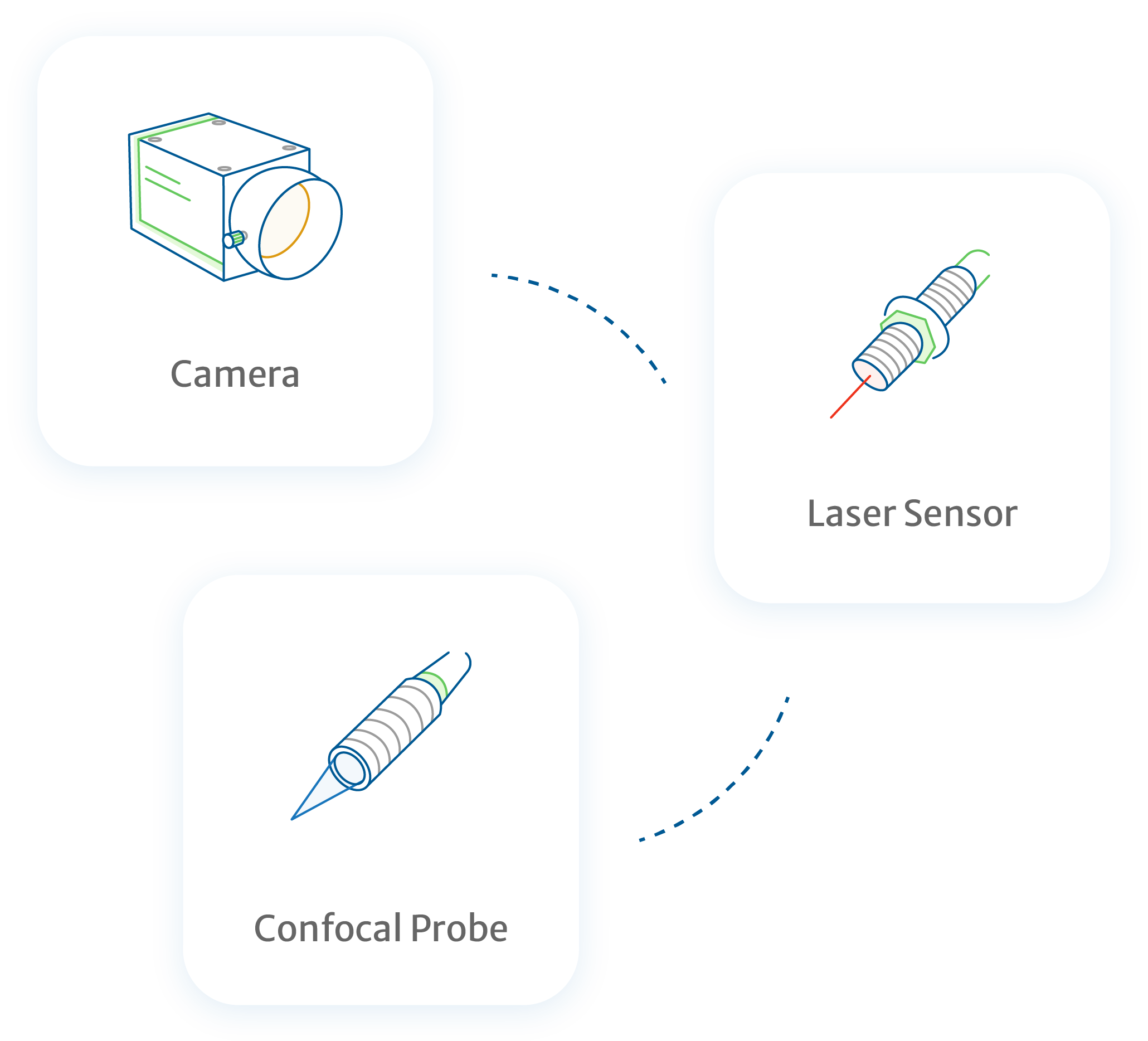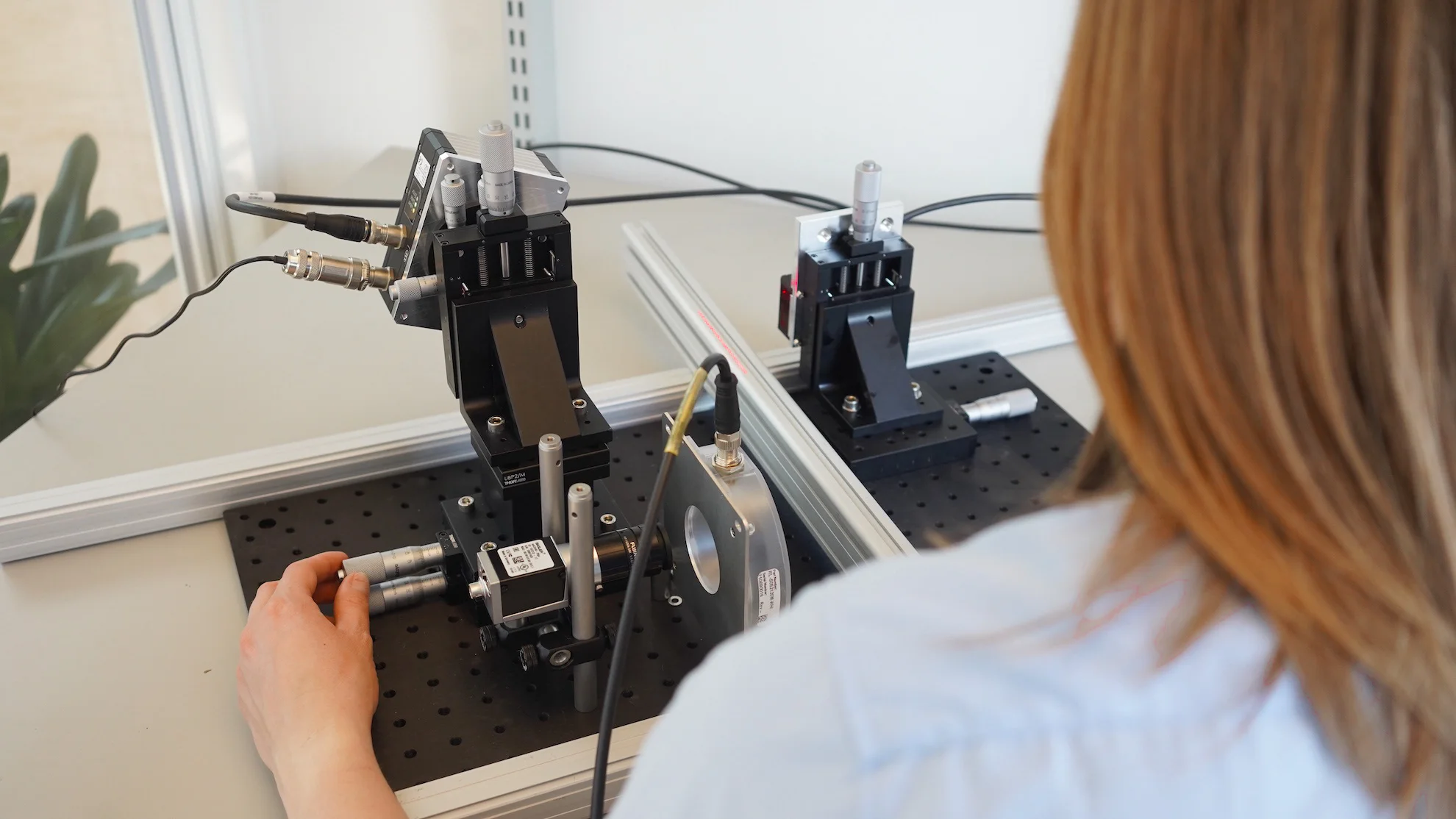
Light has an immense impact on our daily lives. Aside from illuminating the world around us, it has found uses as a measurement tool in numerous areas of science, technology, medicine and industry.
When light encounters an object, it interacts with it in a way that depends on the properties of that object. This interaction leaves a “fingerprint” in the light that returns or passes through that can be used to deduce the optical, chemical and mechanical properties of the object or the material it’s made of. It’s surprising how much information you can get about an object just by shining some light on it and measuring what comes back.
That’s why I want to give you an overview of some different measurement techniques in a series of blog posts. But first I’ll start with 10 advantages of using light as a measurement tool. Hopefully this will get you interested in learning more!
1. Non-invasive
A light beam is non-invasive. It does not physically contact the object under measurement, and it causes no damage (unless desired!). It is also completely sterile.
2. No contact and fewer wires
There is no need to make an electrical or mechanical contact with the object you want to measure. The object just has to be in the line of the light beam.
3. Safe
Many optical measurements can be done using harmless amounts of optical power, making them very safe for operators. When it comes to higher power levels, lasers, and damaging wavelengths, measurement setups are easily designed to turn off instantly if the system is opened, making the likelihood of injury almost zero.
4. Fast
Light beams travel at light speed, so an optical measurement can often be done very quickly and with high throughput. This is a big benefit for measurements on fast-moving parts or on production lines, for example.
5. Reveal the invisible
Different parts of the electromagnetic spectrum interact differently with materials, enabling different properties to be measured in parallel. Compared to visible light, using UV or infra-red light reveals properties that are invisible to our eyes or conventional cameras.
6. Get the relevant measurements
Different detector types and optical filters can be combined to isolate specific wavelengths of light, measuring only the relevant part(s) of the spectrum. This enables unique measurement, and can be done in parallel if a broadband light source is used.

7. Lasting equipment
Many light sources and detectors are not complex, have excellent control and stability and are long lasting, making investment in equipment last a long time into the future.
8. Easy to install and modular
Light-based measurement systems are easy to install on existing equipment such as production lines, processing chambers, pipelines, ovens, etc. Usually, the measurement beams just have to point towards the object being measured, this can be from a distance or through a viewing window, for example. Furthermore, beamsplitters or dichroic mirrors can be placed in a light beam to take part of the light off to a different instrument, making the system modular and easy to expand.
9. Versatile
Light beams can travel through gases, liquids, solids, plasmas, and at very high or low pressures and temperatures. Because light is a non-contact measurement method, there is nearly no limit on what type of material or object it can be used to probe.
10. Flexible
Light is not limited to travelling in straight lines. Optical fibres are inexpensive, flexible, discreet and easy to install. They guide light beams exactly where they are needed to perform a measurement.
A light-based measurement system offers quality assurance, cost efficiency and is an innovative way to measure what you want. To show how you could benefit from these advantages, we will learn about some optical measurement methods in the coming series of blog posts, so stay tuned.
At DVel AB we have several test and measurement experts providing knowledge in designing and building light-based measurement systems. You can also read our post about Hyperspectral imaging – a colorful way of using light as a measurement tool, which is in the same blog serie. Please get in touch if you want to learn more!
By Graham Triggs-Ramm, Measurement Specialist DVel

Linus Amoli
Sales
